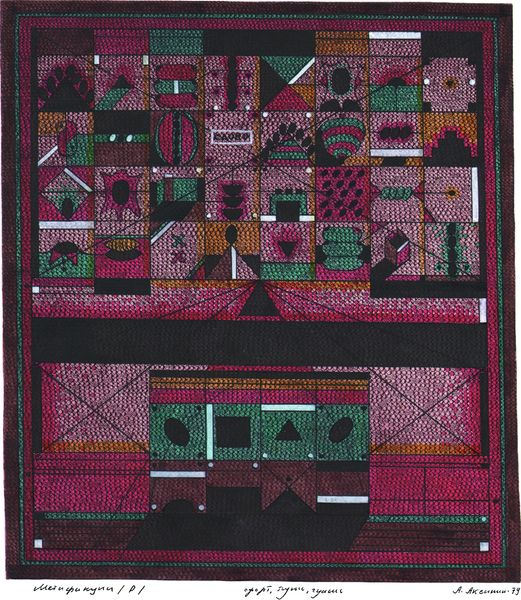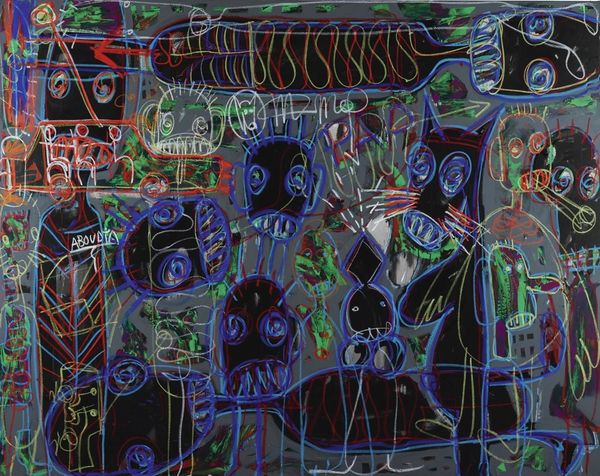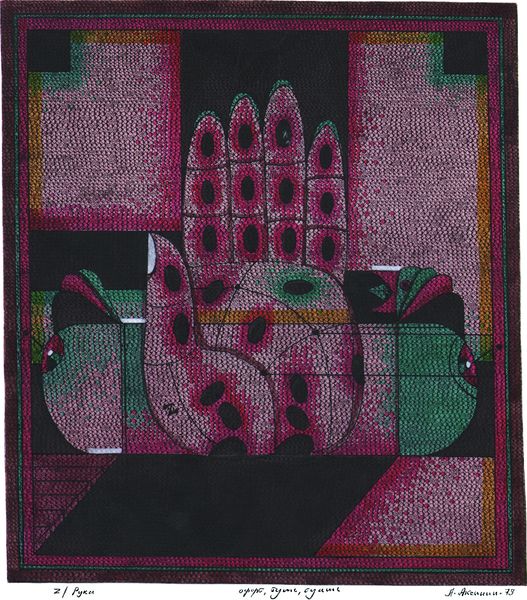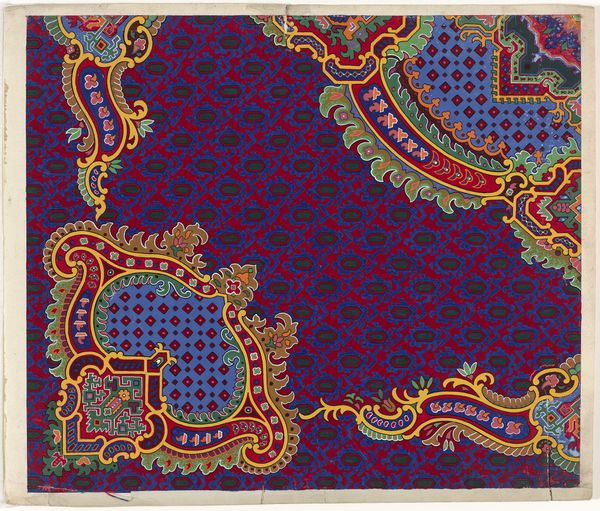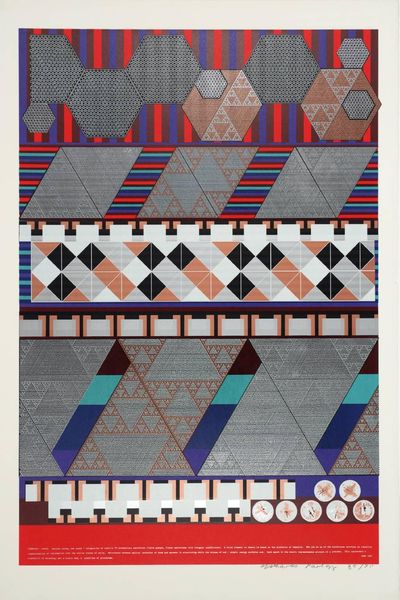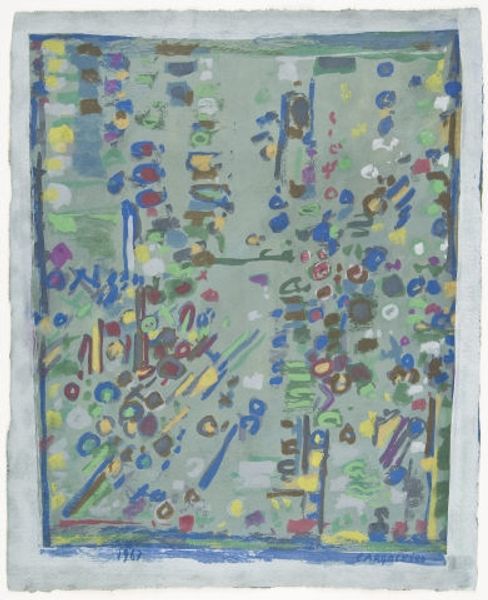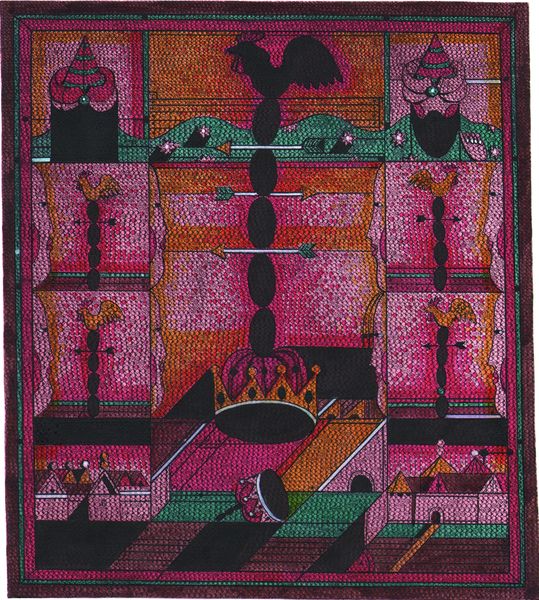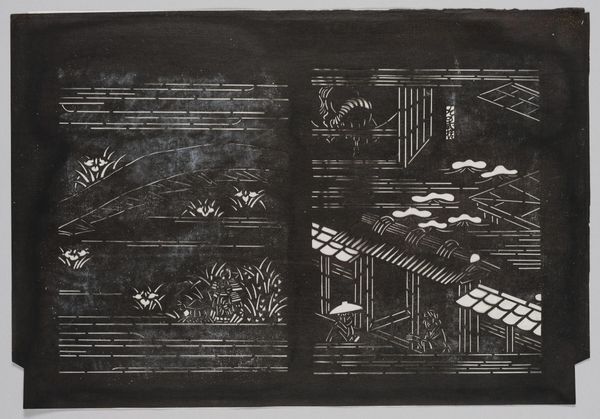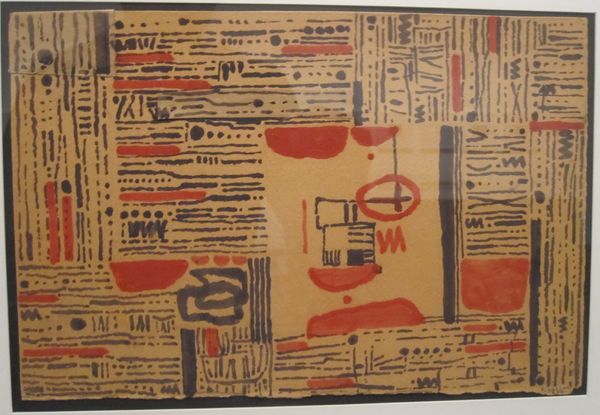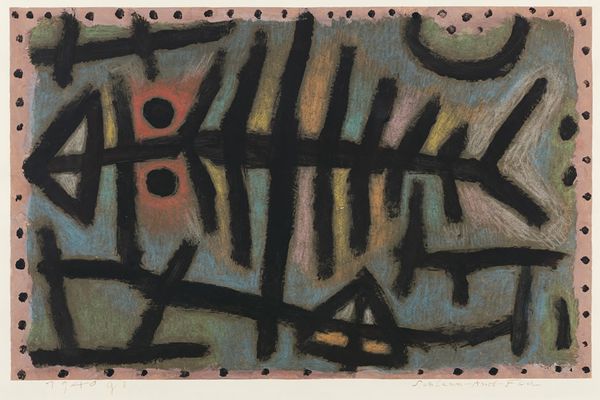
Copyright: NAMIDA AG, Glarus (displayed with the permission of Hundertwasser Non-Profit Foundation) The displayed work of art is protected under the copyright law. In particular, it is not permitted to reproduce, to alter, to print or to publish these works of art. Violations will be prosecuted according to civil and criminal law.
Curator: Let's take a closer look at Friedensreich Hundertwasser's "676A A Rainy Day on the Regentag," created in 1971. What are your first thoughts on this mixed-media piece? Editor: It's quite striking! The layering of colors and geometric forms creates an interesting tension. There's a sort of melancholic beauty, I suppose, reflecting that "rainy day" atmosphere the title suggests. It feels enclosed, a bit claustrophobic, even. Curator: Indeed. Hundertwasser was fascinated by the degradation of urban architecture and the impact of industry on the natural landscape. You can really see it in his choice of materials – the way he combines painting and impasto creates these dense, textured surfaces. It almost feels like looking at corroded metal or aged concrete. What's also compelling to me is his incorporation of what appear to be found objects along the left border of the painting. What impact do you think that brings? Editor: Those seemingly arbitrary elements add a level of almost anti-elitist deconstruction. Instead of emphasizing traditional high art forms, he blurs that distinction, inviting everyday and disposable objects to become a fundamental part of the art, challenging the system that elevates certain art while ignoring accessible mediums and craft practices. Curator: Right, his technique reflects his socio-political commentary. He wasn’t just painting pretty pictures; he was commenting on how urbanization affects society, our connection to nature. It’s hard to look at this "cityscape," as some describe it, without acknowledging his commentary. Editor: And it's a rather somber commentary. Notice how the two dominant circles resemble raindrops, their rigid structure symbolizing the containment and constraints in modern living? The black teardrops create that overwhelming impression, too. One thing is certain: The overall impression isn't about vibrant optimism, is it? Curator: Certainly not. It almost reads as a lament. But it does underscore his strong conviction about our surroundings’ influence on culture. What initially feels messy turns out to be this deliberately chosen strategy reflecting Hundertwasser's vision for a sustainable planet that respects our connection to land and materials. Editor: In a nutshell, I found the painting to trigger deep thought and, strangely, a poignant sense of familiarity given its unusual components. Curator: I concur, a layered narrative and material examination that invites a rethinking about art's responsibility and impact on how we understand our planet.
Comments
No comments
Be the first to comment and join the conversation on the ultimate creative platform.
